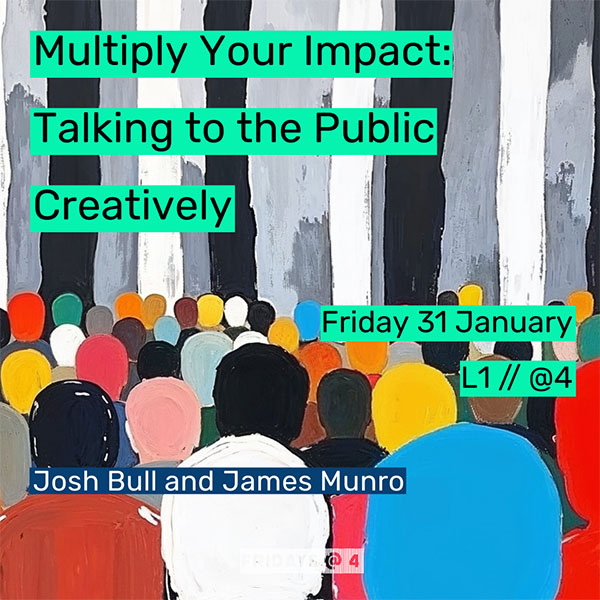15:00
15:00
17:00
Dirac - von Neumann axioms in the setting of Continuous Model Theory
Abstract
Interior-point optimisation for quadratic programs with conic constraints
Abstract
The talk will present the open-source convex optimisation solver Clarabel, an interior-point based solver that uses a novel homogeneous embedding technique offering substantially faster solve times relative to existing open-source and commercial interior-point solvers for some problem types. This improvement is due to both a reduction in the number of required interior point iterations as well as an improvement in both the size and sparsity of the linear system that must be solved at each iteration. For large-scale problems we employ a variety of additional techniques to accelerate solve times, including chordal decomposition methods, GPU sub-solvers, and custom handling of certain specialised cones. The talk will describe details of our implementation and show performance results with respect to solvers based on the standard homogeneous self-dual embedding.
This talk is hosted by Rutherford Appleton Laboratory and will take place @ Harwell Campus, Didcot, OX11 0QX
A unitary three-functor formalism for commutative Von Neumann algebras
Abstract
Six-functor formalisms are ubiquitous in mathematics, and I will start this talk by giving a quick introduction to them. A three-functor formalism is, as the name suggests, (the better) half of a six-functor formalism. I will discuss what it means for such a three-functor formalism to be unitary, and why commutative Von Neumann algebras (and hence, by the Gelfand-Naimark theorem, measure spaces) admit a unitary three-functor formalism that can be viewed as mixing sheaf theory with functional analysis. Based on joint work with André Henriques.
15:30
Certifying hyperbolicity of fibred 3-manifolds
Abstract
Given a triangulated 3-manifold, can we decide whether it is hyperbolic? In general, no efficient algorithm for answering this question is known; however, the problem becomes more manageable if we restrict our attention to specific classes of 3-manifolds. In this talk, I will discuss how to certify that a triangulated fibred 3-manifold is hyperbolic, in polynomial time in the size of the triangulation and in the Euler characteristic of the fibre. The argument relies on the theory of normal surfaces, as well as several previously known certification algorithms, of which I will give a survey. I will also mention, time permitting, a recent algorithm to decide if an element of the mapping class group of a surface is pseudo-Anosov in polynomial time, which is used in the certification procedure.
16:00
Fridays@4 – Multiply Your Impact: Talking to the Public Creatively
Abstract

15:30
Small eigenvalues of hyperbolic surfaces
Abstract
We study the spectrum of the Laplacian on finite-area hyperbolic surfaces of large volume, focusing on small eigenvalues i.e. those below 1/4. I will discuss some recent results and open problems in this area. Based on joint works with Michael Magee and with Joe Thomas.
A posteriori error estimation for randomized low-rank approximation
Abstract
A number of algorithms are now available---including Halko-Martinsson-Tropp, interpolative decomposition, CUR, generalized Nystrom, and QR with column pivoting---for computing a low-rank approximation of matrices. Some methods come with extremely strong guarantees, while others may fail with nonnegligible probability. We present methods for efficiently estimating the error of the approximation for a specific instantiation of the methods. Such certificate allows us to execute "responsibly reckless" algorithms, wherein one tries a fast, but potentially unstable, algorithm, to obtain a potential solution; the quality of the solution is then assessed in a reliable fashion, and remedied if necessary. This is joint work with Gunnar Martinsson.
Time permitting, I will ramble about other topics in Randomised NLA.
15:30
Frobenius categories and Homotopy Quantum Field Theories
Abstract
Topological Quantum Field Theories (TQFTs) have been studied as mathematical toy models for quantum field theories in physics and are described by a functor out of some bordism category. In dimension 2, TQFTs are fully classified by Frobenius algebras. Homotopy Quantum Field Theories (HQFTs), introduced by Turaev, consider additional homotopy data to some target space X on the bordism categories. For homotopy 1-types Turaev also gives a classification via crossed G-Frobenius algebras, where G denotes the fundamental group of X.
In this talk we will introduce a multi-object generalization of Frobenius algebras called Frobenius categories and give a version of this classification theorem involving the fundamental groupoid. Further, we will give a classification theorem for HQFTs with target homotopy 2-types by considering crossed modules (joint work with Alexis Virelizier).
15:30
Symmetries of the free-factor complex and commensurator rigidity for Aut(F)
Abstract
A commensuration of a group G is an isomorphism between finite-index subgroups of G. Equivalence classes of such maps form a group, whose importance first emerged in the work of Margulis on the rigidity and arithmeticity of lattices in semisimple Lie groups. Drawing motivation from this classical setting and from the study of mapping class groups of surfaces, I shall explain why, when N is at least 3, the group of automorphisms of the free group of rank N is its own abstract commensurator. Similar results hold for certain subgroups of Aut(F_N). These results are the outcome of a long-running project with Ric Wade. An important element in the proof is a non-abelian analogue of the Fundamental Theorem of Projective Geometry in which projective subspaces are replaced by the free factors of a free group; this is the content of a long-running project with Mladen Bestvina.

